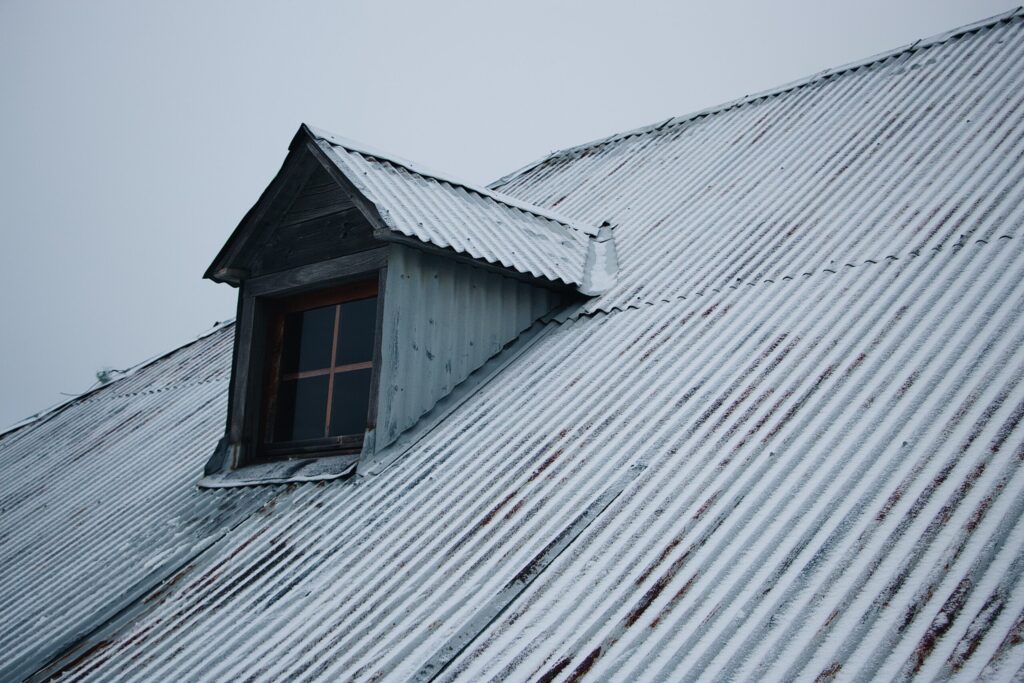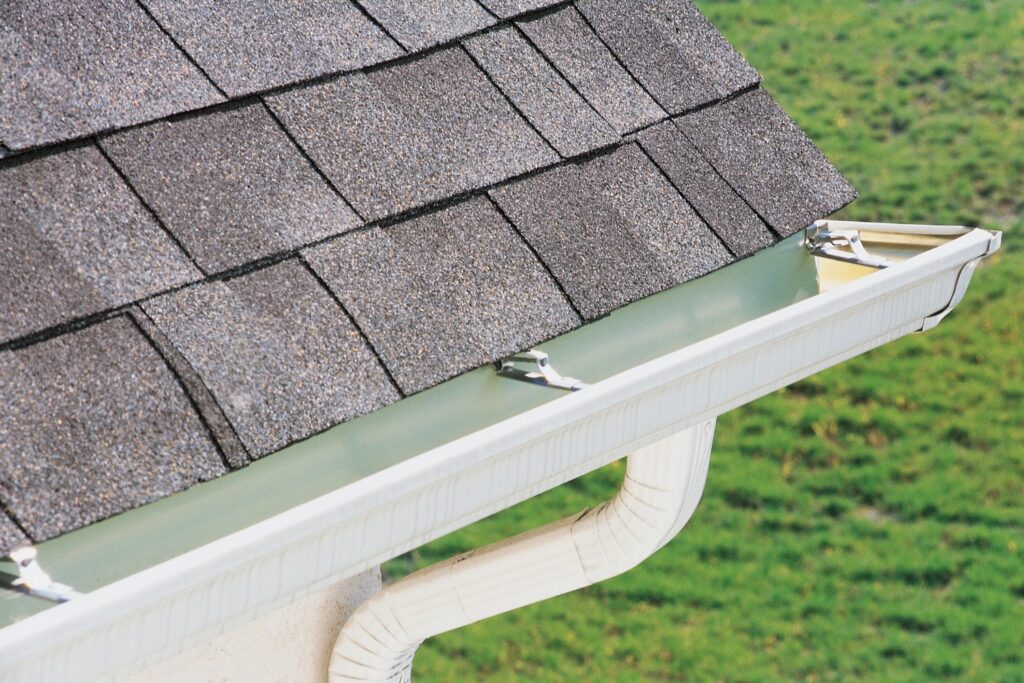Northern Kentucky winters are no strangers to snow, freezing rain, and dramatic temperature swings. While picturesque at first, these conditions often give rise to a costly and damaging issue for homeowners: ice dams. When snow melts during the day and refreezes at night, it can trap water on your roof, leading to leaks, mold, damaged insulation, and warped ceilings.
Understanding how ice dams form, recognizing early warning signs, and implementing smart prevention strategies can save you from expensive repairs. This guide walks you through what every homeowner in Northern Kentucky should know to protect their home—and what to do if the damage has already started.
Key Takeaways
- Kentucky winters cause melting and refreezing that create roof ice dams capable of forcing water beneath shingles.
- Homeowners can prevent damage by improving attic insulation, ventilation, and drainage while scheduling seasonal roof inspections.
- When prevention fails, spotting stains, leaks, or ice buildup early allows quick action to reduce water damage and repair costs.
- Long-term protection comes from professional help, upgraded materials, and regular maintenance provided by local roofing experts.
Proactive Steps to Keep Your Roof Ice-Free This Winter
Kentucky winters can be unpredictable, but preparing your home ahead of time helps minimize the risk of roof ice dams. These preventive measures are essential for keeping your roof protected through freeze–thaw cycles.
Understand the Conditions That Lead to Ice Dams
Daytime thawing and nighttime freezing are common in Kentucky winters. When heat escapes from the attic, snow on the roof melts and refreezes along colder edges. This cycle forms blockages that trap water and push it beneath shingles.
Homes with valleys, low-slope areas, or shaded roof sections—especially in wooded neighborhoods—are more likely to develop ice dams. Addressing these conditions with proper roof repair services can reduce seasonal damage.
Identify Early Warning Signs
Watch for thick icicles forming along gutters, ice ridges near eaves, or discolored soffits. Inside your home, check for ceiling stains, peeling paint, and musty attic odors. These indicators suggest water is getting trapped beneath the roof surface.
A thorough roof inspection can help confirm the presence of hidden leaks and assess insulation or ventilation issues before winter storms escalate the damage.
Improve Attic Insulation
Air leaks around chimneys, recessed lights, and ductwork allow heat to rise into the attic, warming the roof. Sealing those gaps and adding insulation to reach the recommended R-value for our climate (often around R-49 in many attics) helps prevent uneven roof temperatures that lead to melting and refreezing.
Insulation also slows heat loss, supports consistent indoor comfort, and reduces long-term energy costs.
Maintain Proper Ventilation and Drainage
Balanced attic ventilation using soffit and ridge vents stabilizes the roof’s temperature and minimizes snowmelt. Clear gutters and downspouts each fall to ensure meltwater can drain instead of freezing at the roof’s edge. Gutter guards may help reduce seasonal debris buildup.
These ventilation and drainage improvements stabilize roof temperature through freeze–thaw cycles and reduce winter ice risk.
Schedule a Roof Inspection
A professional evaluation can reveal issues before they turn into costly repairs, and a roofing contractor can check for heat leaks, condensation, and ventilation blockages—all of which raise the risk of ice dams.
Annual inspections are especially important if your roof has experienced storm damage or past winter issues.
How to Know When Prevention Failed (and What to Do Next)
Even with the best preparation, ice dams can still form during unpredictable Kentucky winters.
If you’ve noticed signs of trouble or missed key prevention steps, it’s important to act quickly. The following actions can help minimize damage and set your home up for long-term protection.
Spotting Damage After Ice Dams Form
If ice dams have already developed, watch for water stains on ceilings, sagging drywall, or mold near exterior walls. Outside, look for lifted shingles, buckled flashing, or pooling water on low-slope areas.
These are signs that water has breached the roof system and may be damaging your insulation, drywall, or structure.
Immediate Steps to Minimize Water Damage
Use a roof rake to safely remove snow from the lower sections of your roof without climbing onto it. Inside, place buckets under active leaks and move valuables out of harm’s way. Avoid chipping away at ice dams, as this can cause more damage.
Call a professional immediately to assess the extent of damage and begin mitigation.
Long-Term Fixes That Prevent Future Ice Dams
Persistent issues require more permanent solutions. Installing electric heat cables along eaves can melt snow gradually and provide a clear channel for runoff. During roof replacement, applying an ice and water shield underlayment creates a waterproof barrier under shingles.
Upgrading aging shingles or flashing reduces entry points for meltwater, and improving attic efficiency prevents warm air from escaping and restarting the dam cycle.
Strengthen Roof Components Before Winter
Preventing ice dams isn’t only about managing heat and airflow. It’s also about keeping every part of your roof in top shape before freezing temperatures arrive. Damaged or aging materials can create small openings where meltwater seeps in and refreezes, expanding the problem over time.
Check flashing around chimneys, vents, and skylights to ensure they are properly sealed. Replace cracked sealant or corroded metal, since even minor gaps can direct water beneath shingles. Examine soffits and fascia boards for rot or separation that could interrupt ventilation flow.
If you have an older roof, scheduling minor repairs or targeted shingle replacement before winter can extend its lifespan and reduce the risk of ice-related leaks.
Trusted Roof Care for Northern Kentucky Homeowners
Preventing ice dams requires proactive maintenance and localized expertise.
At Craftsmen Roofing and Exteriors, we are a manufacturer-certified roofing contractor trusted by homeowners across the region. We provide roof maintenance, insulation upgrades, and winter-prep solutions tailored to Kentucky’s climate.
Get in touch with us to schedule your inspection and prevent future winter damage before temperatures drop.
Frequently Asked Questions
Can ice dams affect home insurance coverage?
Yes. Some policies exclude damage caused by lack of maintenance, but documentation of inspections or repairs may support your claim.
What kind of professional removes roof ice dams safely?
Licensed roofing contractors with winter damage experience can safely remove ice dams and recommend permanent solutions.
Should I use salt or calcium chloride on my roof?
Calcium chloride is generally safer than rock salt for shingles, but use it sparingly and keep it away from plants and metal surfaces.
How long does it take for an ice dam to cause damage?
In just a few days, trapped water can infiltrate insulation, wood framing, and drywall, especially if temperatures remain below freezing.
Is mold growth common after ice dam leaks?
Yes. Moisture from roof leaks can lead to hidden mold in ceilings and walls, especially if left unaddressed during the winter months.





